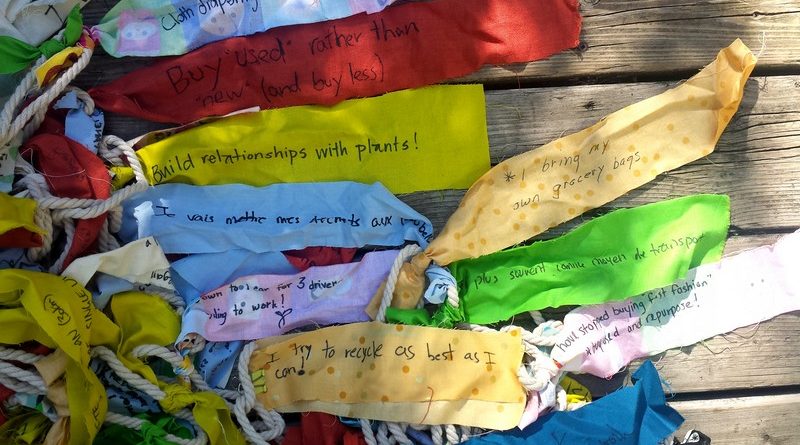Making community climate resolutions
Mia Hunt
The crunch of leaves underfoot, the end of lazy summer schedules, the return of school—autumn’s arrival always feels like the start of a new year. Time for new patterns—for resolutions!

In light of the climate breakdown surrounding us all, I asked influential people in Sandy Hill what they are resolving to work towards to further environmental action in our community.
Paul McAnany, Viscount Alexander’s new Principal, is adding this to his school agenda —
“To reduce Viscount Alexander’s environmental impact, we are working towards a 55% waste diversion rate this year. Most schools are between 20% and 60%. So, this is an ambitious target, but we are committed.”
We’re rooting for you, Paul!
Chair of Prime Ministers’ Row, Suneeta Millington, is keen on green —
“This coming year I’d like to encourage every Sandy Hiller to plant just one tree, wherever that might be. My family planted two this summer and they already make us so happy! And I hope a community member will step up to lead the transformation of the schoolyard at Francojeunesse into a healthy, green, natural play space.”
Google “Ottawa tree planting” with your green thumbs to get going.
Susan Young, President of Action Sandy Hill, is thinking big about consumer choices —
“Eric and I are actively investigating the purchase of our first hybrid or electric car, as the next step to reduce our household greenhouse gas footprint, and I am carefully watching for the City of Ottawa’s next move to increase the rate of recycling by residents, businesses and institutions.”
And, like many Sandy Hill voters, long-time climate activist Diane Beckett is getting political —
“I am so discouraged by the lack of action of the Liberals and Conservatives on climate action. Although the Liberals are much better than the Conservatives, they will take 200 years to achieve their weak and insufficient climate goals. So, I am the co-campaign manager for a Green Party of Canada candidate—because the Greens have real climate goals with targets and a plan on how to achieve real climate action.”
On my part, I resolve to start in the fridge and reduce my household food waste. The Intergovernmental Panel on Climate Change states that between 25 and 30% of all food is wasted. From 2010 to 2016, this contributed 8 to 10% of human-caused greenhouse gas emissions.
Though not an expert, I am also committed to opening up climate discussions in the Sandy Hill community by bringing the Collaborative Climate Bunting project to events—watch for it!—and by writing regularly in IMAGE with empowering ideas for positive environmental change.
There are lots of reasons to get inspired, not just terrified about how to respond to the climate crisis. They may seem small, but our personal, consumer, and political choices make a difference; together, our votes, money, time, energy and thoughts are powerful. Let’s join Sandy Hill’s change-makers in standing up and taking action.
